Making the most of your Airstream adventures requires understanding the basic functions of your Airstream's electrical system. It's easy to take your Airstream out for the weekend to a campground with full hookups, where you can simply plug in and enjoy your time with little to no worry. If you want to explore beyond the traditional campsites and find great boondocking spots off the grid, you need to understand the ins and outs of how your Airstream's battery system works.
But you don't have to be a full-time traveler or an intrepid explorer with boondocking on your agenda to make the most of your Airstream's electrical system. Even something as simple as running your microwave in a gas station parking lot during a pit stop requires understanding how your Airstream's electrical system works, the various components that work together, and the scenarios you'll likely encounter.
While there are numerous details involved – from lithium or AGM batteries and 1000W, 2000W, or 3000W inverters, to the various Airstream models and their unique power accessories – there are several simple explanations of how these systems work that will help you level up your mobile power knowledge.
Shore Power vs. Battery Power
To understand your Airstream’s electrical system, it’s useful to start with the two primary sources of power: shore power and battery power. Both have advantages and limitations, so knowing when and how to use each is essential.
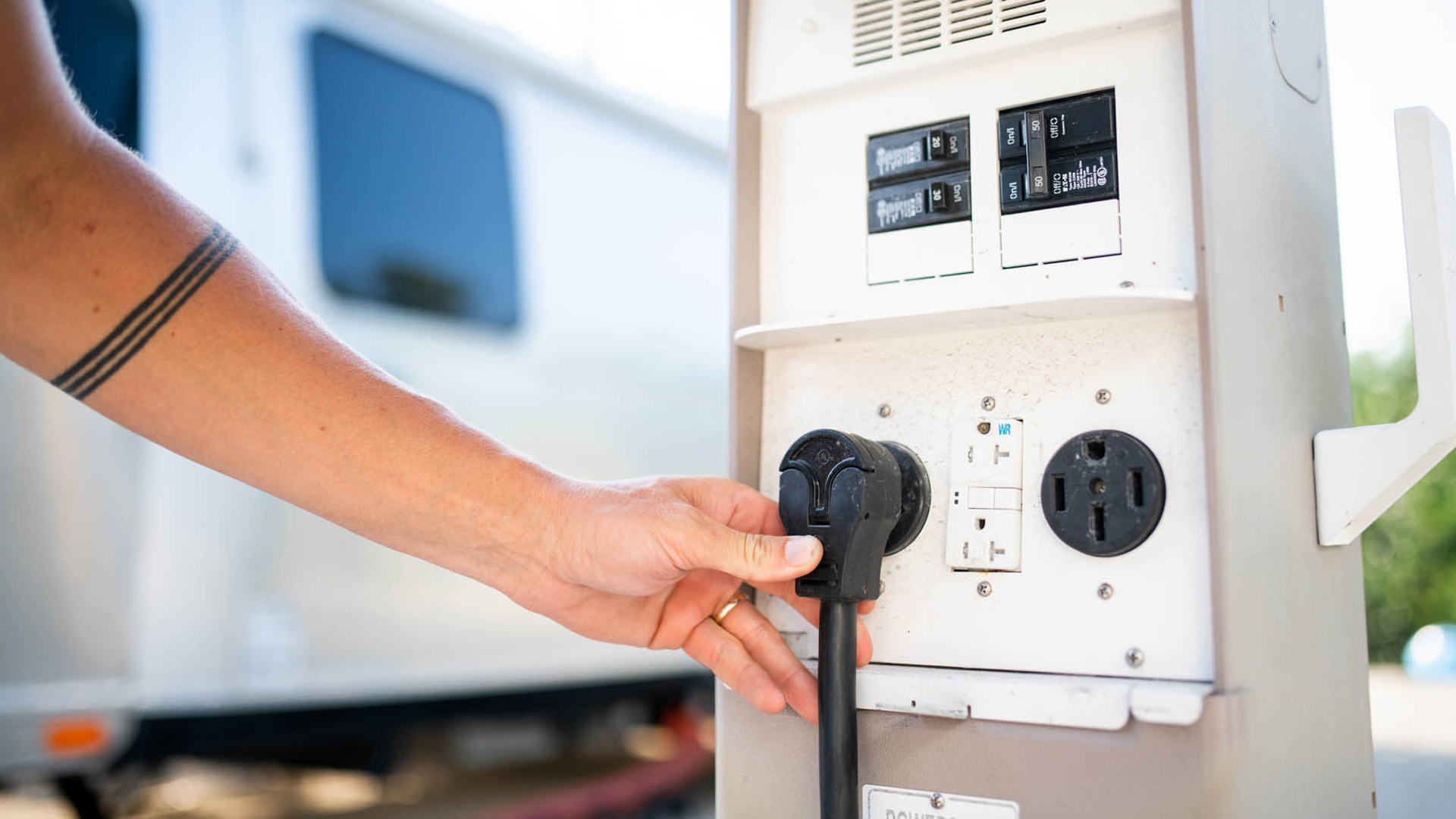
Shore Power: The “Plugged-In” Power Source
Imagine you’ve just arrived at a scenic campground after a long day of travel. You park, settle in, and pull out the shore power cord to plug into the campground’s electric pedestal. That moment of plugging in is like connecting your trailer to a home grid—suddenly, your Airstream is wired into a steady, reliable power source.
This connection, often called shore power (a term borrowed from the maritime world), is typically a 120-volt alternating current (AC) source, the same power you’d find in a house. It runs your Airstream’s energy-hungry appliances, including the air conditioner, microwave, appliances with motors (like blenders), and electrical outlets. A generator is another form of shore power.
Shore power is the go-to source of electricity if you want to enjoy the luxuries of larger appliances without draining your batteries – and without the monitoring necessary to ensure that you have enough battery power left. Shore power is the ultimate set-it-and-forget-it solution for camping: On shore power, your Airstream’s power system runs like a typical household setup, meaning you can run multiple appliances and charge your devices (though there is always the possibility of tripping a breaker if you overload the system).
For new Airstream owners, shore power is an easy way to get familiar with their trailer without too much concern about conserving energy. For those with miles under their belt, shore power is the option to choose if you want a hassle-free experience and plenty of power.
Battery Power: The “On-the-Go” Power Source
Your trailer’s battery power system comes into play whenever you are not connected to a power pedestal. Whether you're camping in a friend's driveway, stopped overnight at a rest area or truck stop, or setting off on a more rugged adventure that takes you off-grid, away from the structured campgrounds and their power hookups, you'll utilize your onboard batteries to supply your Airstream with power.
These batteries are your gateway to real freedom, allowing you to venture off the beaten path with nearly all your Airstream’s amenities. They deliver 12-volt (12V) direct current (DC) power to run several essential systems in your Airstream. The interior lights, vent fans, and the water pump are all designed to run off 12V DC power. You can run larger appliances off the batteries, but only if you have an inverter that "flips" the DC supply to the AC required for more complex electronics (more about inverters shortly). As of Model Year 2025, all Airstream travel trailers and touring coaches except Bambi and Basecamp come equipped with 2000W or 3000W inverters.
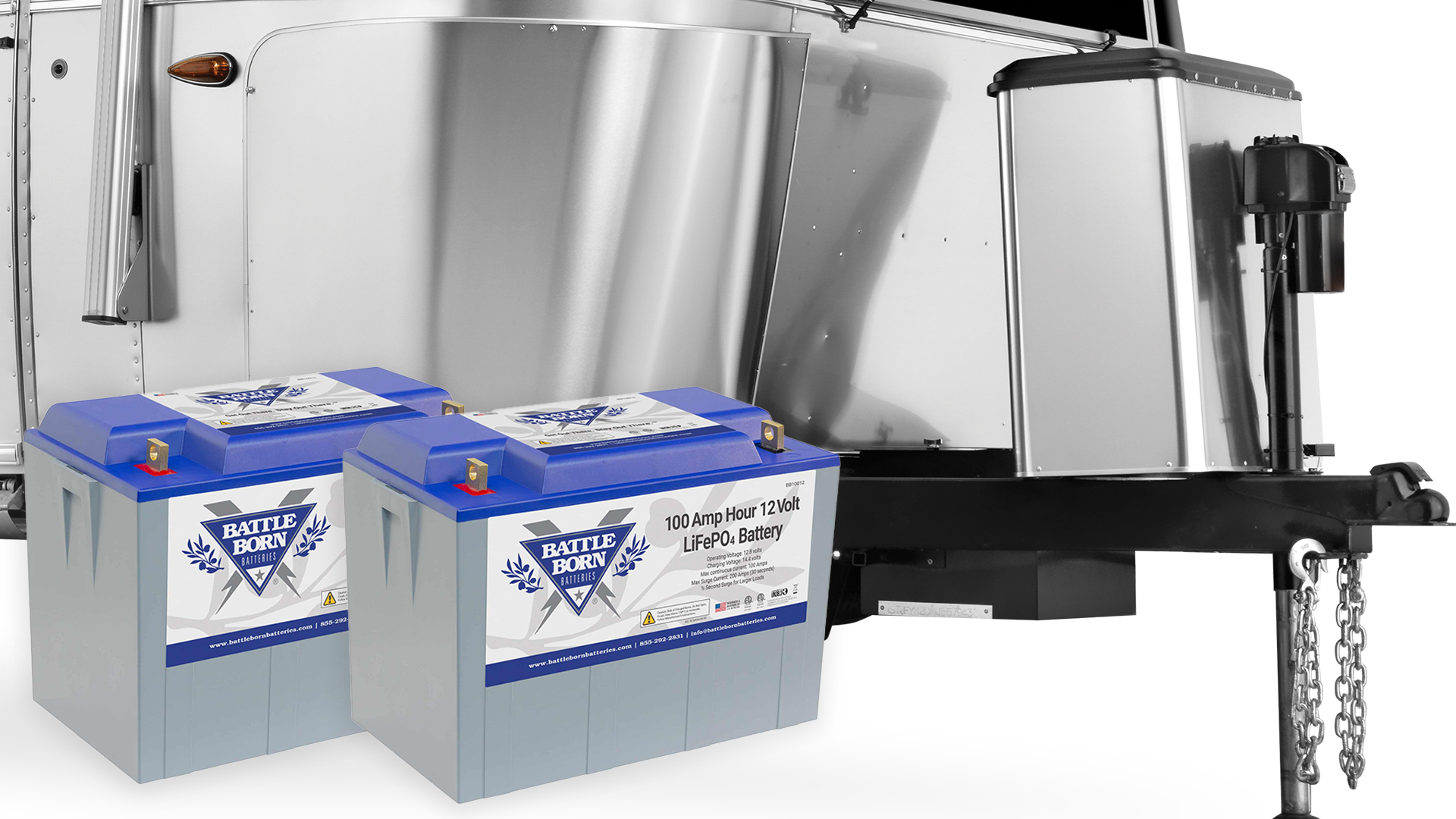
Unlike with shore power, batteries mean you’ll need to be mindful of how much energy you’re using, especially if you’re running multiple systems. While the lights and fans don’t drain too much, using energy-hungry systems like an inverter to power AC outlets (for, let’s say, laptops or the microwave) can quickly eat away at battery life. And though you can recharge your batteries with solar panels, a generator, or even your vehicle’s alternator as you drive, energy conservation becomes essential.
Exploring Trailer Voltages: 120V AC and 12V DC Power
Understanding the difference between 120V AC and 12V DC power in your Airstream is essential. Each serves a different purpose and powers different systems in your travel trailer.
120V AC Power: High-Voltage for Larger Appliances
This high-voltage power is necessary for running larger appliances such as the air conditioning unit, the microwave, and the television. It's also necessary for many complex electronics like a satellite internet systems, hair dryers, and many kitchen appliances.
There are two ways to supply 120V AC to your Airstream: via a shore power hookup or by utilizing an inverter while on battery power. A shore power connection gives your Airstream continual access to 120V AC power, which is household-level electricity. When you’re plugged in 120V AC is delivered to all your outlets.
When you’re not plugged into shore power, you'll need to turn on your Airstream's inverter if you want to run these larger appliances and electronics, and the larger wattage on your inverter, the more powerful appliances you'll be able to run. For example, most microwaves are in the 1000W to 1,500W range, while the air conditioners on the Trade Wind Travel Trailers requires a 3,000W inverter.
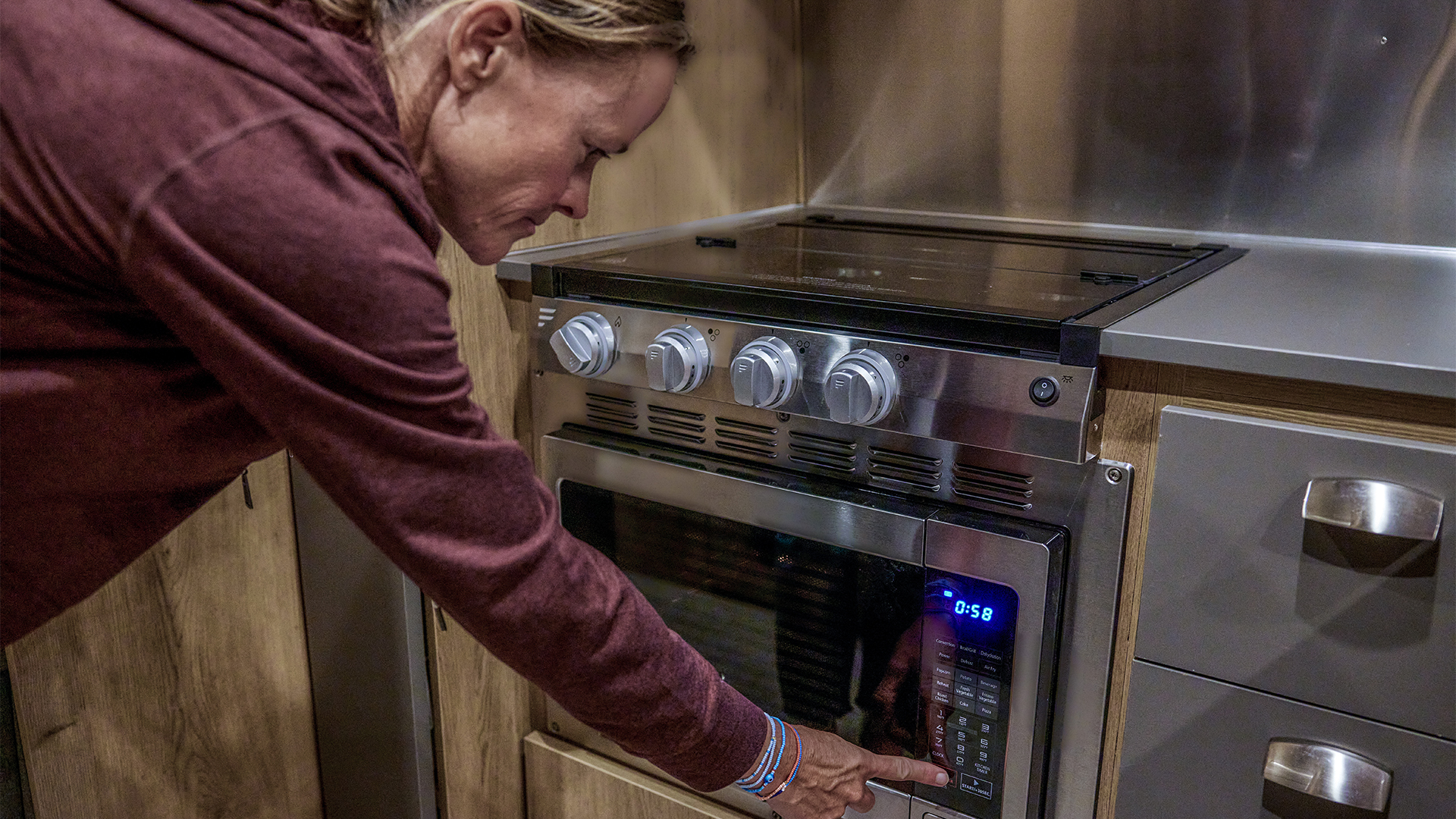
12V DC Power: The Low-Voltage Everyday System
While 120V AC power is the “heavy lifter,” 12V DC power is the everyday hero in your Airstream. Supplied directly by your trailer’s battery bank, this power runs essential systems, including the interior lights, vent fans, and water pump.
Unlike AC power, 12V DC power is available even when you’re off-grid, as long as the batteries are charged. It’s designed to run your trailer's basic functions without requiring huge amounts of energy. With efficient use and some strategic recharging (like driving to recharge from the vehicle alternator or using solar panels), 12V DC power can last a surprisingly long time. For more information on how to read your battery's voltage, see our article on Airstream Support.
A Word on Propane-Powered Appliances
All Airstreams have propane-powered stoves and furnaces, and many pre-2022 models also have propane refrigerators. Many have propane-fueled hot water heaters as well. This arrangement is beneficial when you’re not connected to shore power, as it allows you to conserve your battery for electrical needs while still enjoying hot meals, a cool fridge, and a warm space on chilly nights. Note that electricity is still required to run the blower in your furnace, some functions of the water heater, and the vent fan for your stovetop.
Converters and Inverters: Making it All Work Together
To fully appreciate your Airstream’s electrical system, you must understand the purpose of the converter and inverter. These two devices work together to let you seamlessly switch between shore and battery power, ensuring you’re never left in the dark.
Converters: Turning AC Power into DC Power
When you’re hooked up to shore power, you’re getting a steady stream of 120V AC power. But much of your trailer’s equipment—especially the essentials like lights, fans, and the water pump—needs 12V DC power. That’s where the converter comes in.
The converter takes 120V AC power and transforms it into 12V DC power, allowing you to use these essential systems without draining the battery. Not only does it keep your DC systems running smoothly, but it also charges the battery bank whenever you’re connected to shore power. This way, when you eventually go off-grid, you’ll have a full battery ready to power your trailer’s 12V systems.
Learn more about converters in our Airstream Support article.
Inverters: Converting DC Power Back to AC Power
Now, imagine you’re off-grid and would love to plug in a laptop or run a small appliance. While your trailer’s battery system supplies 12V DC power, your laptop charger or small kitchen appliance likely requires 120V AC. Here’s where the inverter comes in handy.
An inverter converts 12V DC battery power to 120V AC power. This process allows you to use certain AC devices even when you’re off-grid. However, using the inverter can drain your batteries quickly. If you need to use AC power while off-grid, keep an eye on your battery levels, and consider upgrading your battery system if you plan to do a lot of “off-grid” AC usage.
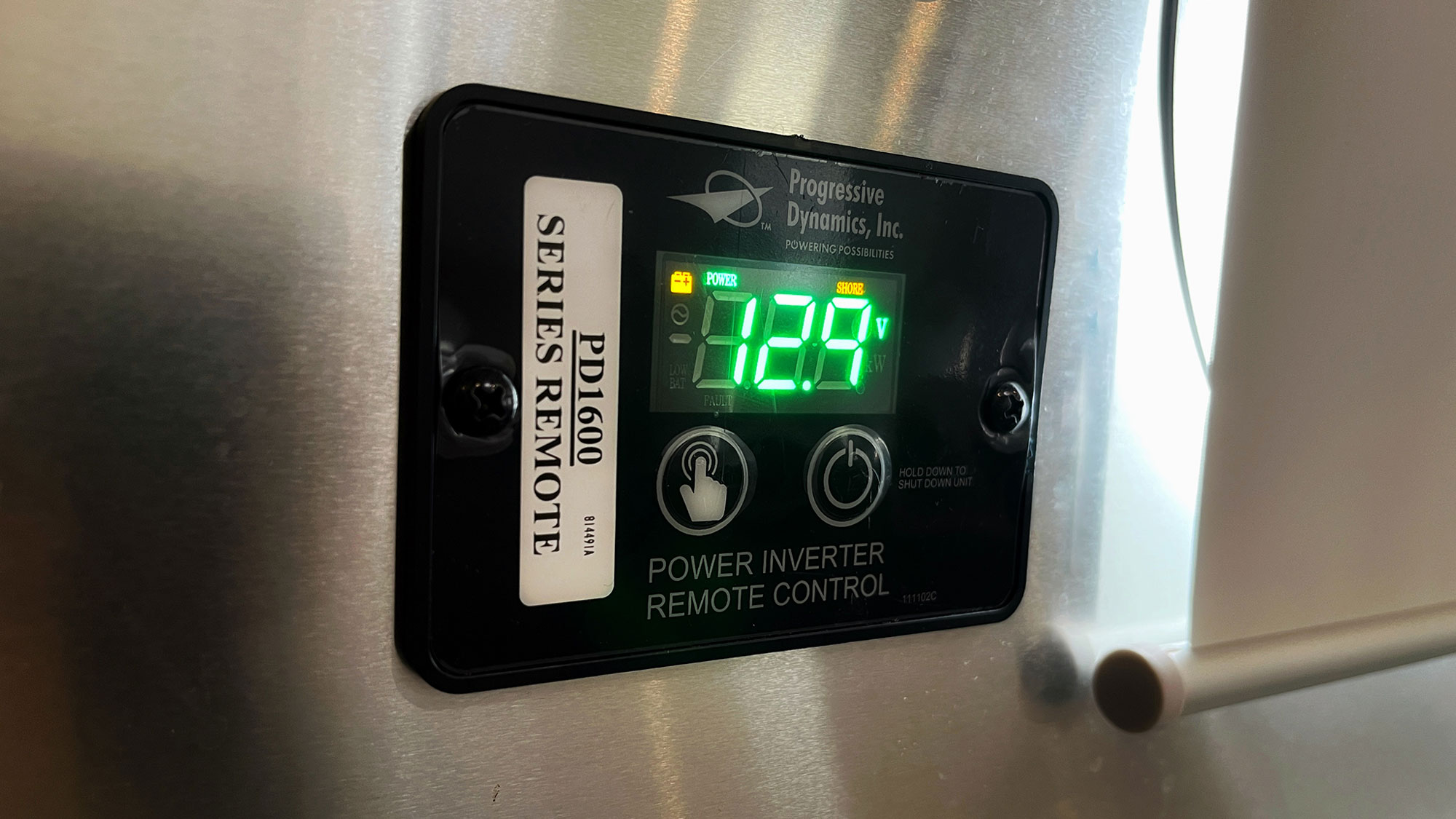
Another consideration: The inverter itself is “an appliance” that uses electricity, and the inversion process results in a loss of roughly 10% of the power that passes through the inverter. So be sure to turn off the inverter when you don’t need it.
For an in-depth look at how inverters work in your Airstream, check out our article on Airstream Support.
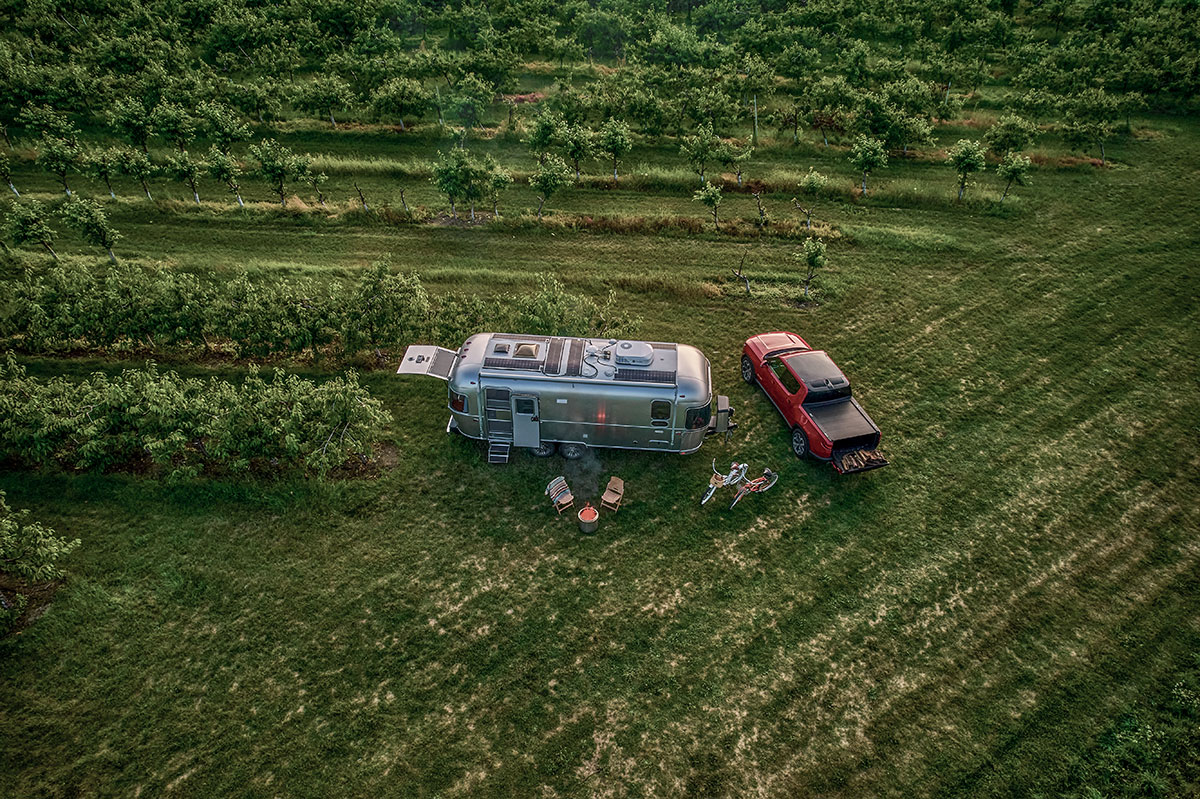
Maximizing Your Airstream’s Power Efficiency
Now that you understand how each power source and device works, here are a few tips to help you make the most out of your Airstream’s electrical system:
- Know What Each Device Needs: Learn which devices require AC vs. DC power. This way, you’ll know which systems will continue running when you switch to battery power alone and which ones will need shore power or an inverter.
- Use the Inverter Sparingly: Since inverters can quickly drain batteries, limit their use to brief charging needs or light-duty appliances. For example, try to charge your phone or laptop in the tow vehicle while driving so the alternator can help recharge your batteries. And be sure to turn off the inverter when you don't need it, as it will continue to draw power from the batteries.
- Solar and Generator Power: If you plan on boondocking, consider investing in solar panels and/or a portable generator to recharge your batteries. All late-model Airstream travel trailers and touring coaches have an external solar panel port for hooking up portable solar panels. And even if you have solar panels, a generator will be helpful when you’re parked in the shade.
- Be Aware of Propane Levels: Keep your tank levels up to ensure you have plenty of energy for propane-powered appliances.
- Keep Tabs on Battery Levels: Regularly monitor your battery charge and get comfortable with what different charge levels mean. This practice will help you plan your energy use more effectively.









